Guitar Anatomy: What are the parts of a guitar?
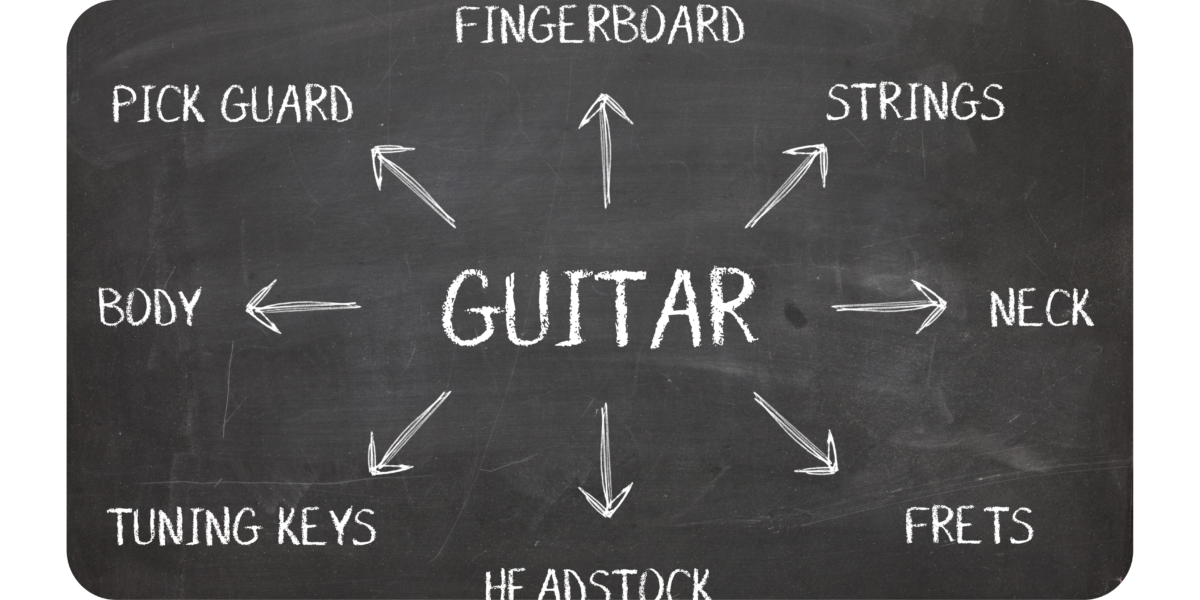
Can you name the different parts of a guitar and what they do? Learn everything there is to know about the anatomy of a guitar in this article.
The guitar’s anatomy has changed considerably since its original conception. Today, manufacturers craft guitars with precision, using fine woods, quality strings, and metal to create extraordinary musical instruments.
Despite these innovations, they have the same fundamental structure.
You know what they say–if it ain’t broken, don’t fix it.
The following explores the body of a guitar from top to bottom. Sit back and enjoy this quick little guitar anatomy lesson.
General guitar anatomy.
While the electric and acoustic guitars have several differences, all guitars have the same general layout. Each part plays an essential role in producing the marvelous guitar sound.
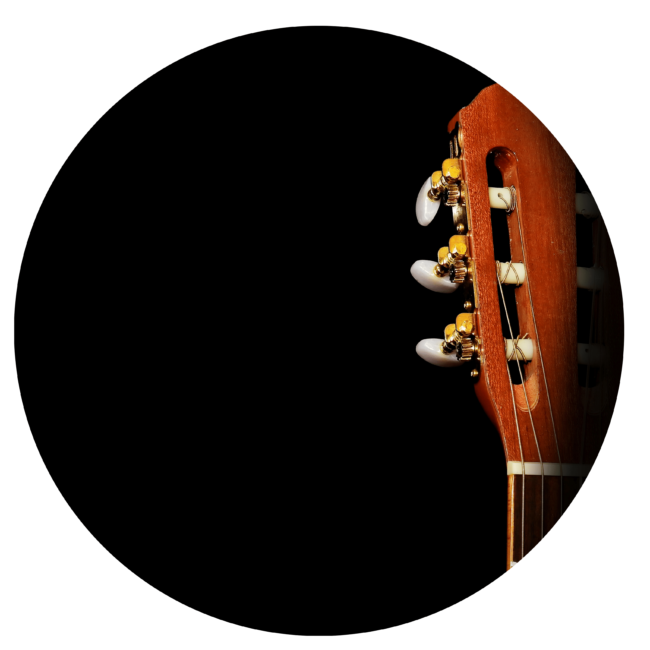
Head.
The headstock sits on top of the neck of the guitar. It’s one of the sides where we anchor the strings.
The wires connect to a ‘tuning machine’ composed of tuning posts and pegs. The strings are wrapped around the tuning posts, and by turning the tuning pegs, you tighten and loosen the strings–affecting the guitar’s tone.
Knowing when your guitar sounds in and out of tune takes a trained ear. Until then, tuners are lifesavers! Simply tune is a fantastic (and free) tuning app you can open from your phone anytime you need.
Lastly, the headstock also has a nut. The nut is generally a piece of plastic or bone that sits where the head and neck meet. With notches carved into them, nuts serve to align and elevate the strings along the fret–playing a vital role in the sound and playability of the instrument.
Neck.
The neck of the guitar is a long thin piece of wood that connects the head to the body. Instrument-makers build the neck with either a single solid piece of wood or laminates many pieces (like rosewood, maple, mahogany, ebony, or walnut) together.
Along the neck, you find the fretboard, frets, truss rod, fret markers, and of course, the strings.
Frets
The fretboard and frets help guitarists navigate and play the strings on the neck. The frets are metal bars that run across the fretboard. When you press down on a string behind a fret, you temporarily change the string’s length and tone.
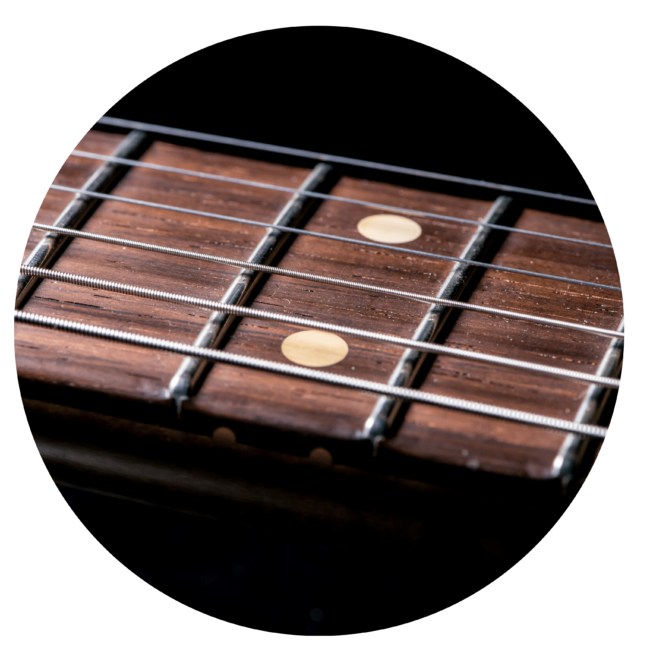
When it comes to creating melodic sounds on a guitar, the possibilities are endless! Want to make your chords more lively? Read through our blog post, 5 Tips to Make Chords More Interesting.
Most guitars also have fret markers positioned at the third, fifth, seventh, and twelfth (and sometimes more) frets for easy reference.
Truss
The truss rod is a metal shaft that runs along the neck from the head to the body. Steel strings create a lot of tension. The truss rod serves to help stabilize the neck.
Strings
Strings aren’t part of any single section of the guitar. They run along the instrument from head to body. However, they’re predominantly along the neck.
Strings are metal wires (usually steel, nickel, brass, and nylon). They are the source of the sound-generating mechanism. You make them vibrate by strumming or plucking a string, creating sound waves.
However, that’s just the beginning of the resonating process. The rest of it takes place in the body.
Body.
The guitar’s body plays an integral role in the tonation of the instrument. In this part of the guitar, we also see the distinctions between electrics and acoustics.
We’ll start by going over the characteristics they share and then dive into the specifics of each after.
We divide the body of a guitar into upper and lower bouts.

What is a guitar bout?
The curved areas at the top and bottom end of the guitar body. If a guitar’s body has the shape of a figure eight, the wide parts are the bouts, and the slender part would be the middle of the eight.
The lower bout is nearest to the neck, and the upper bout is closer to the string termination point.
Cutaway
The body of a guitar can also have a cutaway. The cutaway is an indentation in the body near the neck, making playing higher-pitched notes more accessible.
Pickguard
Guitars also come with a pickguard. Strumming can be a fast-paced movement; sometimes, you can hit your guitar with your pick. Therefore, instrument-makers include a plastic patch that shields your instrument from scratches.
Strap buttons
Guitars also come with strap buttons. These buttons act like nodes that connect your strap–allowing you to secure your instrument and play while standing.
Straps are essential accessories for all guitarists. If you’re curious about what other addons are useful, check out our blog post about 10 Guitar Accessories that Every Guitarist Needs.
Acoustic guitar anatomy.
On an acoustic guitar, the bridge and saddle are the other termination point of the strings. The saddle includes bridge pins that secure the wires while the bridge elevates and aligns them.
When you pluck or strum the strings, the bridge makes it possible for them to vibrate. The vibrations move through the saddle, to the bridge, and to the soundboard (the top of the guitar). The soundboard affects the instrument’s tone–different woods create differing sounds.
The hollow body of the acoustic guitar amplifies the sound by the strings’ vibrations within the body. How the sound enters and exits, the chamber is through the soundhole.
Electric guitar anatomy.
Electric guitars produce sound in a different way than acoustics. This is in part due to differences in body shape and features.
Electric guitars produce sound by turning the vibrations into electrical signals. The way they do that is through a device we call a pickup.
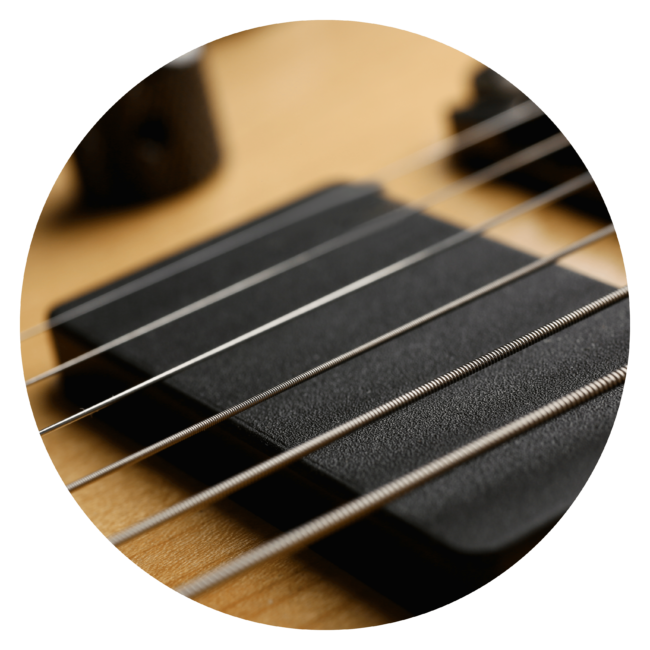
Pickups
We often refer to the pickup as the heart of the electric guitar. Electrics tend to have between one and three of them. The sound of the instrument varies depending on the placement of the pickups.
You can also designate sound conversion to a particular pickup with a pickup selector switch–flip it to switch it.
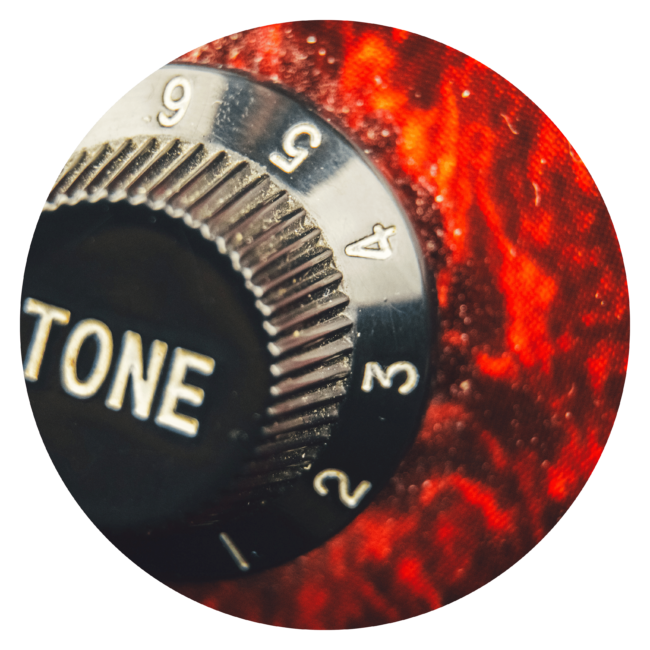
Sound knobs
One of the cool things about electrics is that they offer various sound options on the body.
Volume and tone knobs allow you to play with the sound’s brightness, frequency, and volume.

Output Jacks
Once the sound is converted, it can be amplified by an external speaker, which is why electric guitars have an output jack.
Plugging a cable into your instrument creates a bridge for the signals to travel from your instrument to the speaker.
Anatomy crash course: complete
With a better understanding of the instrument and the parts that make up the whole, you can appreciate each guitar’s various designs, sounds, and playability. Additionally, knowing what qualities you want in your instrument makes shopping for one much simpler.









